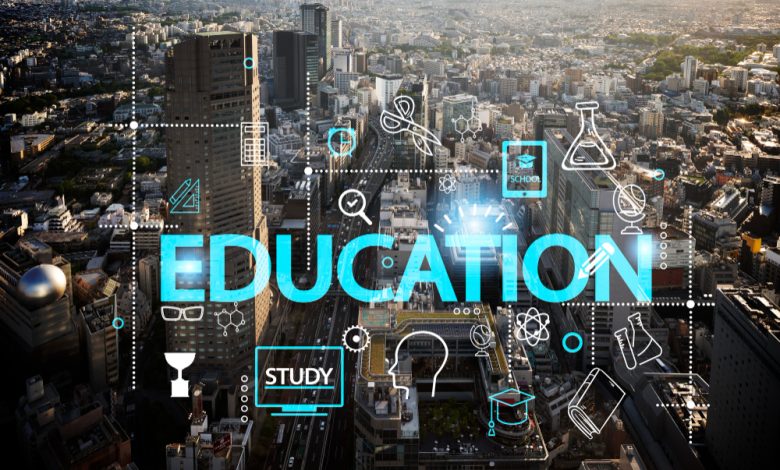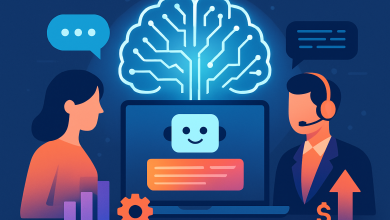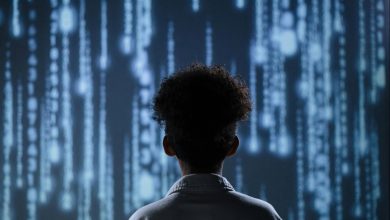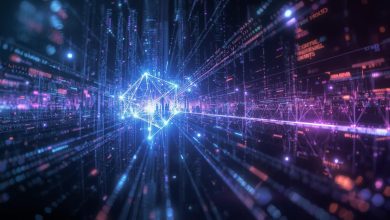
The 21st century has ushered in an age where learning no longer ends with a diploma or degree. The rapid pace of digital transformation, automation, and artificial intelligence has redefined what it means to stay relevant and capable. Continuous learning—the commitment to lifelong skill development and personal growth—has evolved from a professional advantage into a necessity. In an increasingly connected world, knowledge ages quickly, technologies shift overnight, and adaptability has become the core skill that supports all others.
Artificial intelligence (AI) and emerging technologies are now central to this transformation. From personalized online education platforms to AI-powered tutors and self-improving algorithms, technology is reshaping not only what we learn but how we learn. The intersection of human curiosity and intelligent systems is creating new models of growth—ones that combine the emotional intelligence and creativity of humans with the analytical power and precision of machines.
At this intersection, the learner is no longer a passive participant. Instead, they become a collaborator in a hybrid system where AI supports motivation, suggests new paths, and automates repetitive tasks, leaving more space for reflection and innovation. Whether you’re a business professional refining leadership skills, a developer mastering new tools, or a student exploring personal growth, continuous learning powered by technology offers scalable, personalized, and measurable ways to evolve. This new learning ecosystem blends human values with machine intelligence—making personal and professional development more dynamic, data-driven, and deeply self-aware.
The Role of AI and Technology in Continuous Learning
AI-driven tools have fundamentally shifted the mechanics of education and self-improvement. Machine learning algorithms analyze user progress, track performance, and adapt to learning styles, creating unique, tailored pathways. For example, an AI platform might detect that a learner struggles with critical thinking tasks but excels in communication, automatically rebalancing the curriculum to reinforce weaker areas while building on strengths.
This intelligent personalization goes far beyond traditional online learning models. Natural language processing allows AI tutors to engage in human-like dialogue, answering questions and clarifying concepts in real time. Meanwhile, data analytics provides learners and educators with insights into engagement levels, content effectiveness, and behavioral trends.
Technology also breaks down accessibility barriers. Cloud-based platforms and mobile learning apps make education possible anytime, anywhere. Learners from different geographies and time zones can connect, collaborate, and share feedback seamlessly. With immersive technologies like virtual and augmented reality, learning becomes experiential—students can practice surgical procedures, manage virtual teams, or explore data environments safely and interactively.
However, the most profound impact of AI and technology lies in mindset transformation. Continuous learning in this new era is no longer reactive—it’s proactive. It encourages curiosity, fosters agility, and aligns personal purpose with professional goals. The tools are not replacing human potential; they are amplifying it.
Practical Paths to Smarter Learning
For example, one of the most prominent models of human-centered online education is eSoftSkills, an online learning platform focused on soft skills, leadership, management, and personal development. The platform offers self-paced, 100 % online training programs designed to fit flexible schedules, making it accessible to learners worldwide. eSoftSkills emphasizes not only skill acquisition, but also self-discovery: its content is rooted in personality psychology, aiming to help users better understand their own traits, strengths, and growth areas. Through a mix of formats—videos, interactive exercises, webinars, and coaching support—learners can explore topics ranging from communication, emotional intelligence, critical thinking, and time management to leadership, career growth, and decision-making. eSoftSkills also provides an integrated learning management system (LMS) for organizations, enabling scalable training, white-labeling, and analytics. With a community of learners and coaches, it promotes continuous learning in a supportive environment, empowering individuals and teams to evolve holistically.
Key Features & Highlights
- Fully Online & Self-Paced — Learners can proceed on their own timeline, from any location.
- Broad Range of Soft Skills & Professional Topics — From emotional intelligence and communication to project management, HR, leadership, decision making, and personal growth.
- Integrated LMS Platform for Organizations — Cloud-based LMS with features like white-labeling, reporting dashboards, support for SCORM & xAPI, mobile apps, multi-tenancy, and SSO.
- Ready-Made Training Materials — Bundles of trainer slides, learner workbooks, quizzes, interactive content, and editable assets.
- Tailored & Personalized Paths — Custom learning journeys aligned with the individual’s personality, goals, and growth areas.
Bridging Human Skills and Intelligent Systems
The evolution of continuous learning today depends on merging soft-skill development with technological fluency. Emotional intelligence, communication, and leadership remain the foundation of effective growth—but these must now coexist with digital adaptability and AI literacy. Platforms like eSoftSkills focus on enhancing self-awareness and interpersonal skills, helping learners build confidence and emotional resilience.
Yet, as AI tools become part of daily workflows, understanding how intelligent systems think, plan, and execute becomes equally important. This balance between human empathy and machine logic allows individuals to thrive in a workplace that increasingly values both adaptability and digital competence. The next step in this evolution is understanding how AI-driven platforms like AutoGPT illustrate this technological side of the learning equation.
AutoGPT positions itself as a resource hub for everything around AutoGPT and AI agents: from the latest news and tool reviews to tutorials and in-depth guides. The site covers the evolving landscape of autonomous AI systems, offering analyses, feature breakdowns, and case studies on practical applications. While not the original development repository, the site acts as a lens into how AutoGPT and related technologies evolve, interpret breakthroughs, and influence the broader AI community. As AutoGPT continues to develop—autonomously delegating sub-tasks, managing memory, and integrating with external tools—the site helps readers stay current on trends, challenges, and usage strategies.
Key Features
Below are core features and capabilities associated with AutoGPT (as discussed on AutoGPT.net and other sources). These represent what users and developers most often highlight when exploring autonomous AI agents:
- Autonomous task decomposition – It can break a user’s high-level goal into smaller subtasks and execute them sequentially with minimal additional input.
- Memory management (short- and long-term) – The system retains context across interactions to inform its decisions and maintain continuity.
- Internet access & information gathering – It can search the web, pull external data, and integrate findings into task execution.
AI as a Catalyst for Human-Centered Learning
At first glance, AI and soft-skill development might appear to belong to separate worlds—one analytical, the other emotional. Yet, their convergence reveals the most transformative potential for growth. Continuous learning in today’s digital economy demands more than technical mastery; it requires empathy, adaptability, and the ability to communicate effectively in an AI-mediated environment.
AI-powered systems can now evaluate communication tone, provide feedback on presentation style, or even simulate leadership scenarios using natural language understanding. When integrated into personal development platforms, these capabilities bridge the gap between data and emotion. Learners receive real-time feedback not only on correctness but on empathy, clarity, and coherence—skills that define effective professionals and leaders.
The synergy between human and machine learning also fosters greater self-awareness. By analyzing performance patterns, AI can highlight unconscious habits or decision-making biases, helping individuals recognize growth areas they might overlook. For organizations, this translates into data-informed workforce development—where training programs are continuously refined based on real behavioral evidence, not assumptions.
As such, AI isn’t replacing human intelligence; it’s enhancing emotional intelligence with measurable insight. It allows humans to evolve faster, with more precision and reflection, creating a loop where learning fuels self-awareness—and self-awareness fuels better learning.
Bridging the Gap: Technology as a Learning Ecosystem
The true value of continuous learning lies in its ecosystem—the blend of tools, platforms, mentors, and data that keeps knowledge flowing. Cloud-based systems and AI agents like AutoGPT exemplify the shift from static content to dynamic knowledge interaction. They automate research, suggest new resources, and even create study plans based on performance metrics.
Meanwhile, platforms emphasizing human connection and psychology, like soft-skill learning hubs, keep the process grounded in empathy and behavioral growth. Together, they represent two sides of the same coin: technology enabling scale and efficiency, and human-centered learning ensuring meaning and purpose.
In practical terms, this balance helps individuals and organizations prepare for an uncertain future. As jobs evolve and industries transform, adaptability becomes the most valuable competency. The new learning ecosystem powered by AI encourages iterative growth—where learners continuously assess, relearn, and evolve. It’s not about racing machines; it’s about learning with them.
Organizations that embrace this integrated approach benefit from employees who are not just technically proficient but emotionally intelligent and self-driven. This fusion of machine precision and human insight creates resilient, innovative, and adaptive cultures capable of thriving amid rapid change.
Conclusion
Continuous learning at the intersection of AI and technology marks a defining shift in how humans grow. It blends personal reflection with digital precision, creating an ecosystem where curiosity and computation coexist. Platforms that nurture emotional intelligence and self-discovery complement those that expand automation and analytical power, forming a holistic model of learning.





